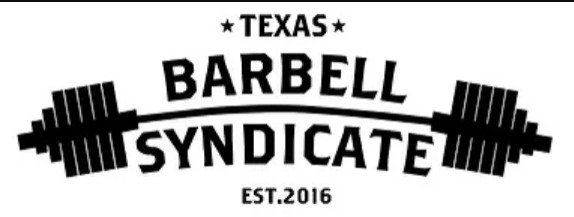It’s the holidays, and that usually means that your dietary goals get sidelined in favor of Aunt Judi’s chocolate pie (trust me though, it’s really good pie). However, this year can be a little different. Coming into the holidays with a game plan can make a world of difference on your waistline, and keep you on track for your goals. Below I break down some strategies you can use to help fully enjoy the holidays, without being that one family member who avoids the pie at all costs.
1 Let the holiday be one day long
A lot of people run into trouble with this one. A holiday by itself is not enough to wreck your goals - but when you let Thanksgiving turn into the whole month of November, it adds up. Compound that with the whole month of December for Christmas, and you have some serious work ahead of you to get out of the hole you dug.
The Strategy : Celebrate and have fun — but don’t eat a full meal of turkey, stuffing, sweet potato casserole, and three types of pie every day for a week. Keep the special meal limited to just that — one special meal.
2 Pre-Game
When you are really hungry going into a meal, people tend to eat faster and more recklessly than they normally would. Instead of going in feeling like you are starving and ready to eat the whole turkey, do some pre-gaming ahead of time so you can come into the holiday with your normal control intact.
The Strategy : Before heading out, eat a snack that includes fiber and preferably some greens or fruit. This might mean a small salad, an apple with a little bit of peanut butter, or some fresh raw vegetables. Even if all you can do is an apple while you wait as the family finishes cooking the big meal, it will help.
3 Prioritize your plate loading order
If you prioritize how you load your plate, you can still get a serving of all the tasty goodies, without overdoing it.
The Strategy : Start with your meat first, then vegetables or greens, saving the carbohydrates and fats for last. By the time you get to the mashed potatoes, you will have to keep your serving size reasonable to fit it next to your green beans and turkey.
4 Drink water with each serving
Drinking water throughout the day with each plate or serving will help keep you feeling full, not to mention hydrated. Staying hydrated not only helps curb the hunger signals your brain is receiving, but also helps your body digest your food more efficiently.
The Strategy : Drink a glass of water as you eat your plate. If you want something else to drink, take a few minutes between plates to drink your specialty beverage and let your body catch up to what you just ate.
5 Add in some activity
Many holiday parties, especially with family, turn into a big meal and a nap. Sitting around after eating until its time for second dinner is a sure way to end up in trouble.
The Strategy : Be the fun person who brings out the stuff to do. A jumbo game of Jenga, passing the football around, or taking a walk to look at the decorations in the neighborhood are all examples of good ways to get moving after that meal, and still enjoy the company your friends and family.
6 Keep a log of your food - Even over the holidays
Keeping track of your food intake is one of the simplest ways to stay on top of what you are taking in. Now there are a smorgasbord of apps that are available to help you do it quickly and easily, and most of the best ones have a free version. The top three that I have used in the past are My Fitness Pal, Lifesum, and Eatly.
The Strategy : Keep logging every day, and be honest - even on the days when you know that you are going to go way over your calorie goals. If you are starting to derail, you will be able to see it quickly with the summaries given by these apps.
7 Keep working out over the holidays
The holidays (really the whole stretch from November to January) are a tough time to try and stick to a workout schedule for most people. Family is in town, end of year parties, friends, events - it all adds up in a very short amount of time. But if you can manage to keep your body moving and your metabolism burning, it will help you feel better every day and keep you from getting totally sidelined by the end of December.
The Strategy : Even if you can only find 10 minutes a day to get sweaty, do it. Take a short run, or a quick bike ride. If you feel really brave, try the Burpee Challenge. Start a 6 minute timer and see how many burpees you can do in intervals of 40 seconds on, 20 seconds off. Then try to beat your score the next time.
8 Don’t hover by the food
Especially at a holiday party with a large, buffet style spread (work party, anyone?) it can be far too easy to hang out by the food tables and slowly graze. Between the mindless, social nature of the eating and the constant sight, smell, and allure of the food right next to you, it’s not long before you have eaten more than you intended to.
The Strategy : Work the room. Visualize ahead of time what you intend to eat (and how you intend to feel when you leave), then make your plate and walk away from the food tables. Make your way around the entire room and try to focus more on the socialization and the people than on the snacks and goodies.
Some people are better planners, and have a little more discipline when it comes to their diet. For those people, the last recommendations will be easier. For everyone else, these can still be helpful, but if you aren’t already the type who can handle meal prepping or planning out your meals, you may struggle with these tips.
9 Cycle your carbohydrates
Cycling down your carbohydrates for the week leading up to the holiday is a good way to prepare your body for the crazy cheat meal you and your uncle are planning. This has to be done carefully and intentionally, because starting too soon will slow your metabolism down too much by the time you get to the big meal. Starting too late will leave you throwing back large amounts of carbohydrates before your body has depleted it’s glycogen stores in the muscles.
The Strategy : Start cycling your carbs down 6-7 days before the big meal. I would recommend 0.5 grams of carbohydrates per pound of body weight for approximately 3 days, and then 0.25 grams of carbohydrates per pound of body weight for the next 3-4 days. For a 200 lb male, this would mean 100 grams of carbohydrates for the first three days, then 50 grams for the next 3-4. Be sure to drink plenty of water while doing this to help keep yourself hydrated.
10 Intermittent Fast
Let’s say you find out one or two days ahead of time that there is a party or cheat meal coming that you didn’t have time to prepare for. Intermittent fasting is one way that you can help mitigate the calorie load for the day and keep your body on track. Starting the day before or even the day of, you can control how many calories you end up taking in before it’s enough to throw you off. I don’t recommend this method for everyone. Only those who know they have the discipline to handle this type of fasting for a day or two should give this a shot.
The Strategy : On the day of or the day before, only ingest water, black coffee, and non-caloric drinks such as unsweetened tea. Some caffeine is your friend here, and will help stave off hunger cravings throughout the day and keep you sated until meal time. I would recommend at least a 12 hour fast on these days. Once it is time to break the fast and begin feeding, start with something like a leafy green salad and then wait 15-30 minutes before continuing with the rest of the food.
I hope these tips help you get through the holiday season while still sticking to your goals. Nobody wants to have to start over on their health and fitness when January rolls around. By choosing a few strategies and using them, your new year’s resolution can be about adding on to you goals, not getting back to them.
Happy Holidays!
Dr. Paul Harris holds a Doctor of Chiropractic degree from Texas Chiropractic College and a Master’s of Exercise and Health Sciences from University of Houston Clear Lake. He is the owner of Delta V Chiropractic and Sports Medicine and an avid human movement specialist.





